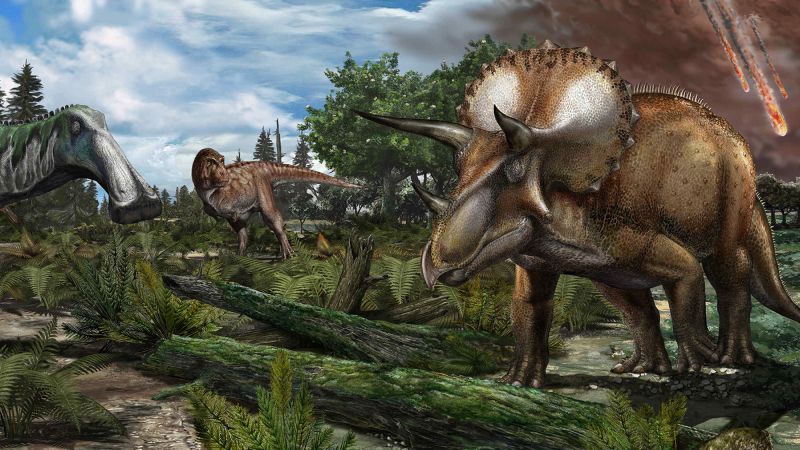The question of whether dinosaurs were facing extinction when an asteroid struck Earth 66 million years ago has been a topic of intense debate among paleontologists for decades. A pivotal new study attempts to shed light on this mystery, focusing on the fossil record from North America. Researchers have examined the period of 18 million years leading up to the mass extinction at the end of the Cretaceous, suggesting that dinosaurs were thriving rather than declining prior to the asteroid’s impact. This analysis, published in the journal Current Biology, adds layers to our understanding of dinosaur survival just before their sudden disappearance.
Historically, the fossil record has indicated a decline in dinosaur diversity, peaking around 75 million years ago and showing a decrease in species numbers in the nine million years preceding the catastrophic event. However, Chris Dean, the lead study author from University College London, emphasized that the quality and completeness of the fossil record are far from perfect. He pointed out that biases have distorted perceptions of dinosaur diversity since the 1970s, making it challenging to accurately assess their status during the late Cretaceous. Recent advancements in methodologies have enabled researchers to utilize more sophisticated analytics, particularly in modeling occupancy to estimate the presence of dinosaur species in given locations.
Dean articulated that employing such advanced techniques in understanding ancient biodiversity is complex yet necessary for uncovering truths about dinosaurs. His study was unique in how it systematically applied occupancy modeling—a statistical approach traditionally used in contemporary ecology—to the timeframe of the dinosaurs’ existence, lending new insights into their stability and eventual extinction risks.
To conduct the study, the team focused on four major families of dinosaurs: Ankylosauridae (club-tailed dinosaurs), Ceratopsidae (like Triceratops), Hadrosauridae (duck-billed dinosaurs), and Tyrannosauridae (which includes the notorious Tyrannosaurus rex). The objective was to gather enough data by mapping out the landscape of North America and identifying fossil distribution and research frequency. As the data unfolded through a computer modeling process, the results depicted a consistent occupancy pattern when juxtaposed with fossil evidence. Surprisingly, the findings suggested that these dinosaur groups maintained stable habitat areas, implying a low risk of extinction as they approached the end of the Mesozoic era.
An important factor that possibly contributed to the perceived decline in species was geological changes that left extensive rock layers less accessible to fossil hunters. According to coauthor Alfio Alessandro Chiarenza, the illusion of a decline in biodiversity may stem from these geological limitations rather than an actual decrease in dinosaur populations. This could imply that had it not been for the asteroid impact, dinosaurs might still be coexisting on Earth with other species, underscoring the randomness of extinction events.
Complementing these findings, paleontologist Darla Zelenitsky of the University of Calgary acknowledged the biases introduced by the rock record, which have historically clouded scientists’ understanding of dinosaur diversity. She stressed the importance of geological conditions in influencing the fossil record and supporting a proper reckoning of dinosaur diversity patterns prior to the mass extinction.
Mike Benton, a vertebrate paleontologist from the University of Bristol, conveyed skepticism about whether the conclusions definitively ruled out declines in dinosaur diversity. While he appreciated the thoroughness of the study, he suggested that the reduction in species could still be warranted based on existing evidence.
This comprehensive research not only highlights the complexities surrounding dinosaur extinction but also illustrates how scientific understanding continues to evolve with new methodologies and perspectives. As Dean remarked, there is still much to explore as we seek clarity in the narrative of these magnificent creatures that once roamed the Earth. The implications of this research can enhance our appreciation for the intricate tapestry of life and survival on our planet, yielding ongoing questions about resilience and adaptation in the face of environmental change.












